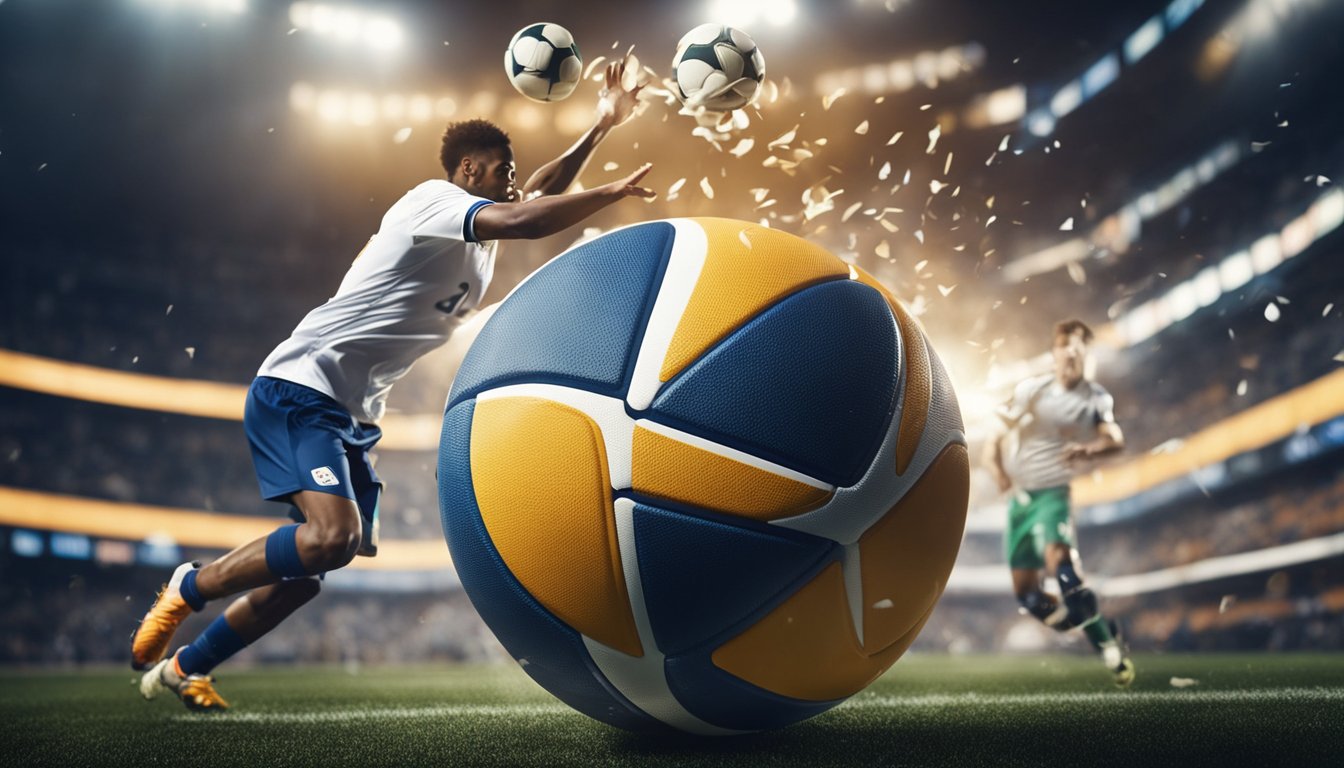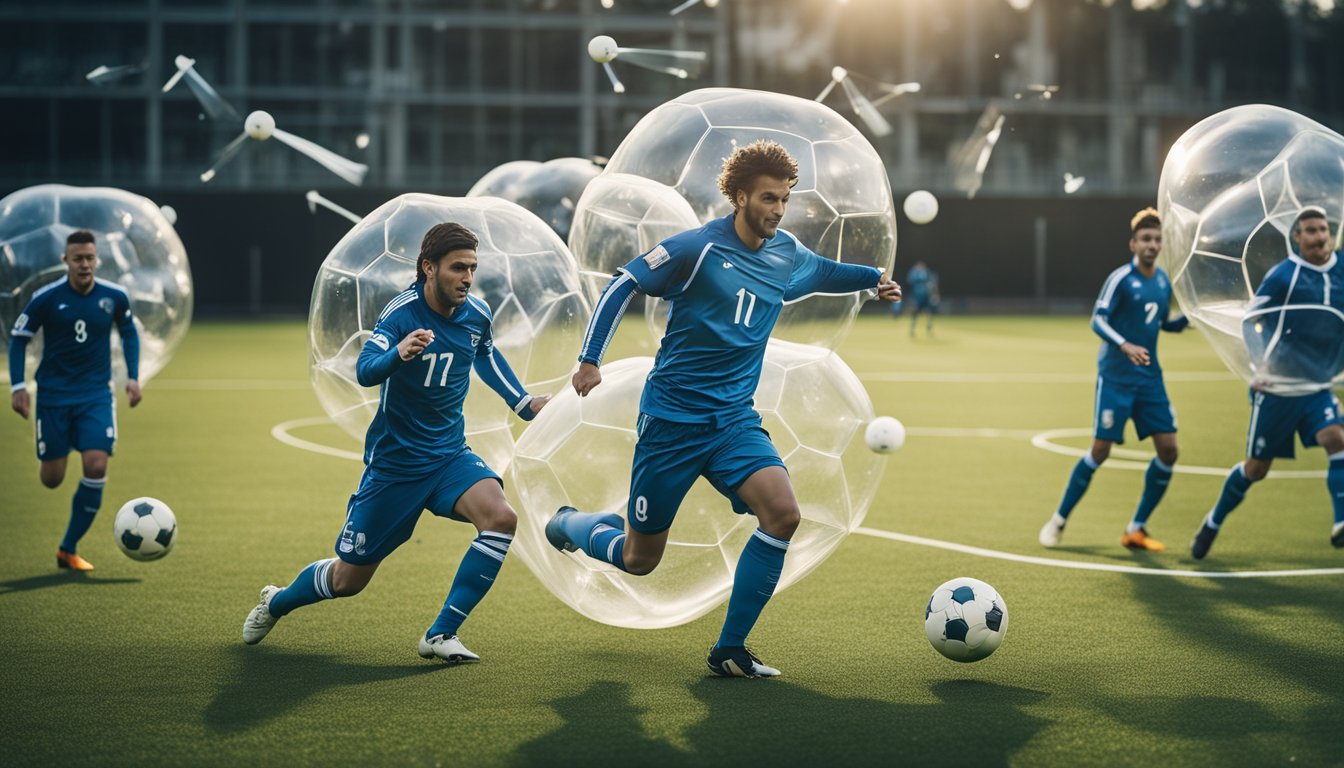Late updated: 20 Dec 2024 16:12
Written by: Emma Saunders
Bubble Football Science: The Physics Behind the Game
Imagine an exhilarating sport that combines the fun of football with the thrill of physics—welcome to Bubble Football. This innovative game captivates players and spectators by merging physical challenges with fundamental principles of physics. At its core, Bubble Football relies on the laws of physics, such as gravity and air resistance, to create a unique and entertaining experience.

As we navigate this fascinating sport, we explore how the basic principles governing player movements and ball interactions transform an ordinary game into something extraordinary. Bubble Football illustrates the beauty of physics in motion, demonstrating how the trajectory of the ball and player dynamics are influenced by these forces. This understanding enhances our appreciation of the sport and adds depth to our experience as viewers and participants.
The insights gained from analysing player and ball interactions not only provide a deeper understanding of the sport but also elevate our game strategy and enjoyment. We invite you to delve into this intriguing world where science and sport intersect, offering both entertainment and learning opportunities as we uncover the mechanics behind Bubble Football.
Key Takeaways
- Physics plays a crucial role in Bubble Football dynamics.
- Player movements are influenced by gravity and air resistance.
- Understanding these interactions enhances gameplay strategy.
The Physics of Bubble Football
Bubble football is driven by similar principles as traditional football but adds unique dynamics due to the protective bubble suits. We will explore how motion and impact rules, the safety afforded by bubble suits, and the unique dynamics of bubble football combine to influence gameplay.
Basics of Motion and Impact
In bubble football, Newton’s laws of motion provide a framework for understanding player collisions and ball dynamics on the pitch. The first law, inertia, tells us that a player will remain in motion or at rest until acted upon by another force. This is evident when players collide; their speed and direction change due to the force exerted during impact.
Kinetic energy, which players generate while moving, plays a central role in collisions. The faster and heavier a player, the greater their kinetic energy. This energy transfer during engagement can result in dramatic deflections or even send players bouncing in their protective bubbles. Additionally, friction between the player’s feet and the ground affects their ability to accelerate and decelerate, influencing tactical movements and control.
Bubble Suits and Player Safety
Bubble suits add a layer of protection, creating a buffer around players that absorbs the impact upon collision. This cushioning effect reduces the risk of injury, allowing players to engage robustly and take tumbles without significant harm. Designed from durable, inflated plastic, these suits distribute forces across a large area.
Helmet-like coverage is also essential, protecting players from head injuries. The suits' round shape and material absorb shock, protecting players while maintaining comfort and manoeuvrability. Safety is heightened through limited vision; players need to be mindful of where they run. This balance of safety and gameplay intensity ensures bubble football remains a thrilling yet secure sport.
Dynamics of the Bubble Football
The dynamics of bubble football introduce new challenges and gameplay strategies. As players are encapsulated in large bubbles, their mass and drag increase, affecting how they move. The air within the bubbles creates buoyancy, offering less stability when changing directions quickly.
Speed and acceleration are affected since players must work against the increased resistance and manage potential energy within the bubble. Balancing these forces for effective movement requires strategic thought and physical finesse. Players often find themselves at the whims of inertia, bouncing and spinning in ways unfamiliar in standard football. This unpredictability leads to comedic, yet skillful plays that challenge even veteran footballers.
Analysing Player and Ball Interactions

In bubble football, the interactions between the player and ball are vital for understanding gameplay dynamics. Factors like spin, aerodynamics, and technology play key roles in these interactions.
Influence of Spin and Aerodynamics
Spin significantly impacts ball trajectory. When a player kicks or throws the ball, spin can cause it to curve, a result of the Magnus effect. This effect occurs when air pressure differences created by the spin alter flight paths, crucial in both football and other sports involving projectile motion. Aerodynamic properties like drag also affect the ball.
A well-designed ball reduces drag, enabling longer travel. Ball design considers these aspects, ensuring optimal performance during matches. Mathematics and physics principles come into play, governing how angles and forces interact to control the ball's motion. Understanding these elements enhances our appreciation of football's scientific undertone.
Technology and Gameplay Analysis
Technology is revolutionising what we know about ball and player interactions. Wearable tech and GPS trackers offer insights into player movements and ball handling. In professional football and soccer, these tools enable coaches to analyse throw-ins, passes, and overall game strategy with greater precision.
By utilising tech innovations, it’s possible to monitor how often players engage with the ball and the effectiveness of their interactions. This data-driven approach allows for refining techniques, improving training regimens, and ultimately transforming gameplay strategies. Our exploration into these innovations highlights the evolving nature of football physics and its impact on modern sport.
Frequently Asked Questions

In bubble football, physics shapes the strategies and skills that players use. Whether it's the way a ball curves or the effect of a tackle, understanding these elements can enhance both gameplay and enjoyment.
How does the application of physics play a role in the mechanics of kicking a football?
The act of kicking involves kinetic energy transfer from the leg to the ball. Factors such as force, angle, and spin determine the flight path. Players leverage the physics of motion to control speed and direction.
In what ways does the science behind soccer ball design affect its performance during a game?
The design of a football, including its shape and material, influences aerodynamics. The smooth surface and panel configuration affect airflow and drag, impacting how the ball travels through the air and its stability in flight.
Can you discuss the fundamental physics principles that apply to the act of tackling in football?
Tackling integrates concepts of momentum and force. The mass and speed of a player determine the impact on an opponent. By analysing angles and techniques, players can optimise their tackles, increasing effectiveness while minimising injury risk.
What are the scientific factors that contribute to the accuracy and power of throwing a football?
Throwing a football involves mastering projectile motion. Proper grip, release angle, and spin affect trajectory and speed. Aerodynamics play a role in how the ball cuts through the air, which can greatly enhance precision and distance.
How are concepts of physics integrated into the training and strategy of football?
Training often utilises physics principles to refine skills. Drills focus on balance, momentum, and angles to improve performance. Strategy incorporates these elements, enabling teams to execute plays that exploit physical laws to their advantage.
What is the relationship between football gameplay and the laws of physics?
Football actions, from passing to defending, adhere to physical laws. Newton's laws of motion, for instance, explain how players accelerate, decelerate, and collide. By understanding these laws, players can better predict outcomes and adjust their game play.
